Hello World! 为什么第一个程序总是它。 -----箴言-----
我们的第一个Android 应用程序,仍然从显示诸如hello字符串开始。与直接显示一个Hello字符串不同,本例子展示了最流行的fragment的跳转。
本文展示了如何在Android Studio中进行Android应用程序的开发步骤,以及Android Studio中的代码的目录结构。
1. 开发环境:
我用的开发环境是最新的Android Studio 4.1.2, gradle版本是6.5,如图:
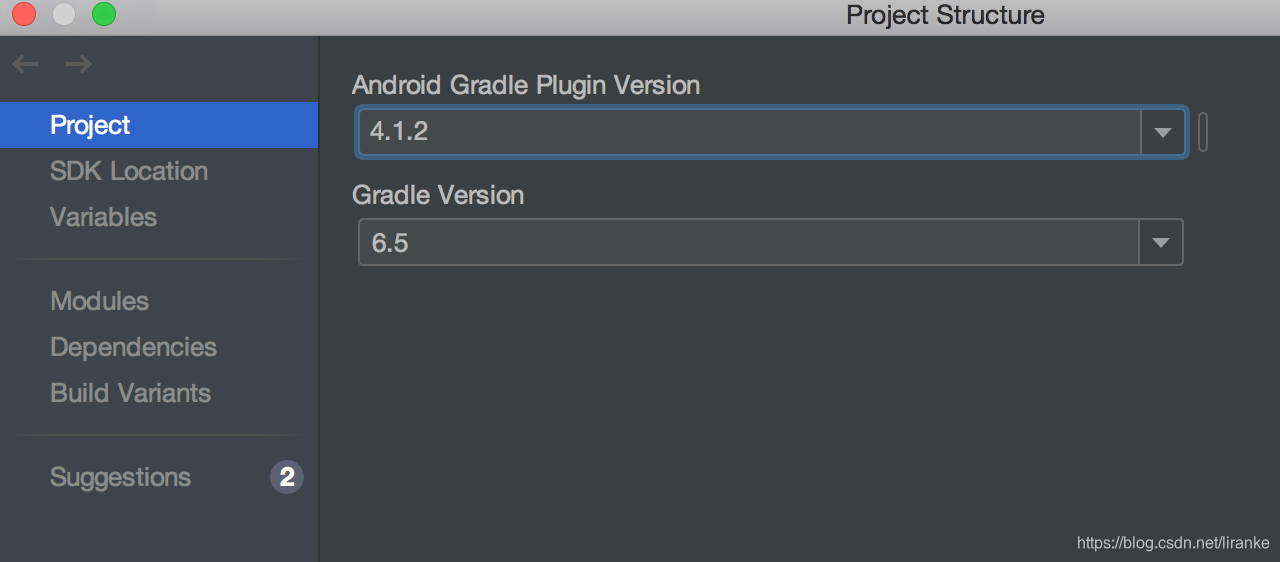
2. 运行环境和运行结果:
运行环境:
我用的是网易MUMU模拟器,运行结果如下:
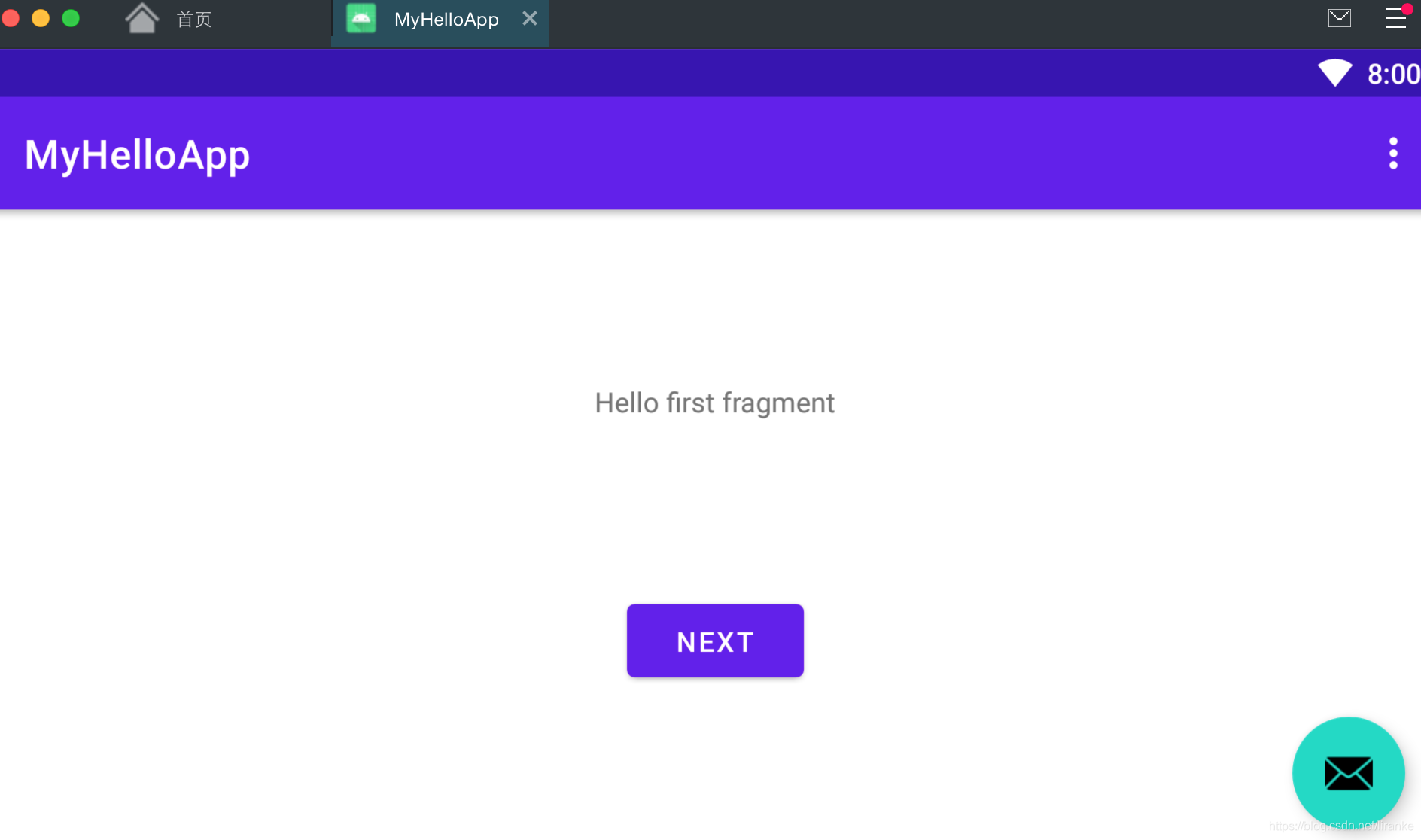
点击NEXT,跳转到下一个Fragment:
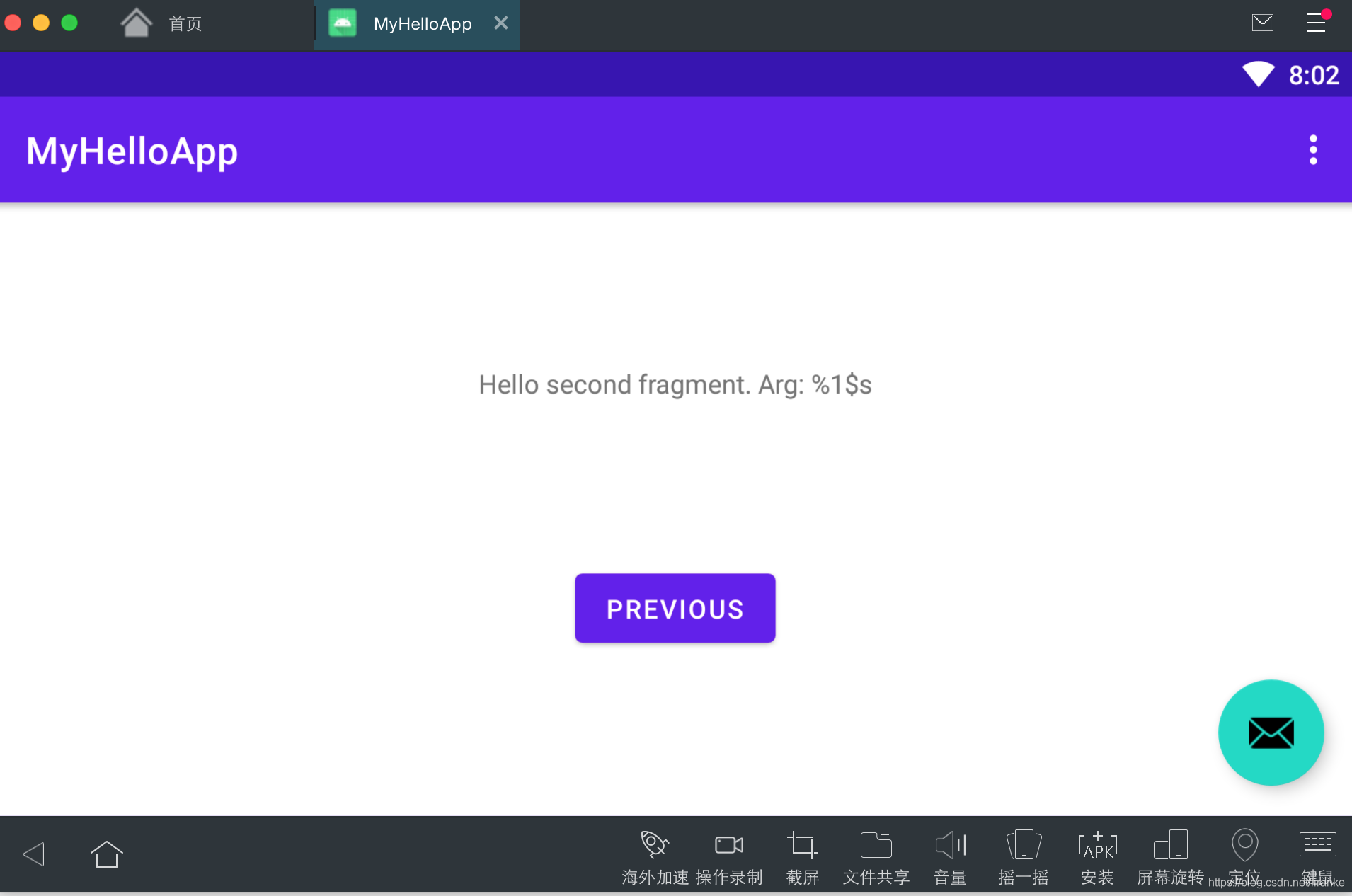
可以看出,默认使用Basic Activity,会创建两个fragment,这和以前的版本还是有些区别的。
2. 开发步骤:
在AndroidStudio中,点击File->New->New Project...,出现如图所示:

选择Basic Activity,Next:
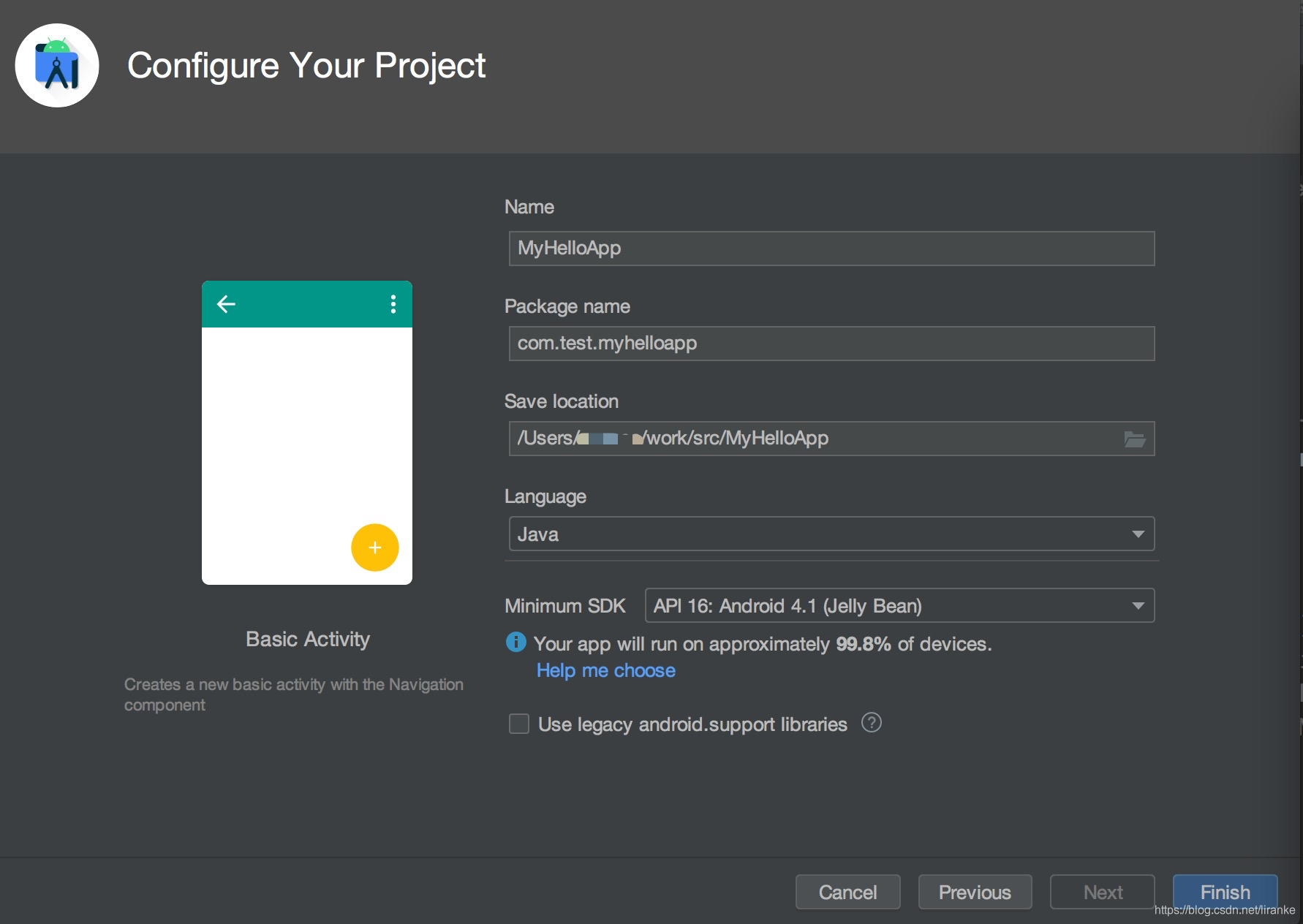
然后Finish即可,创建好的代码结构如图:
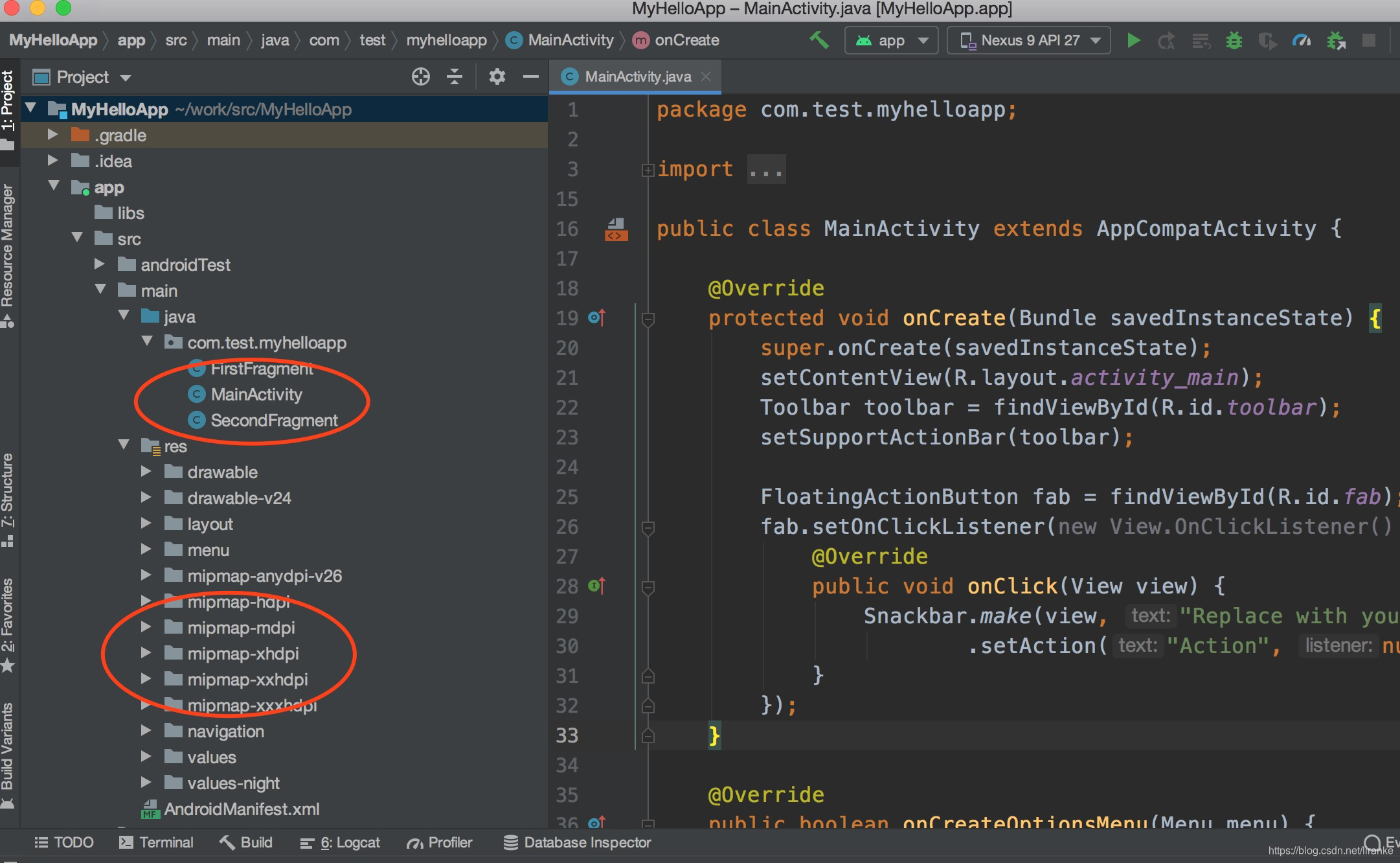
再来看一下MainActivity的代码:
package com.test.myhelloapp;
import android.os.Bundle;
import com.google.android.material.floatingactionbutton.FloatingActionButton;
import com.google.android.material.snackbar.Snackbar;
import androidx.appcompat.app.AppCompatActivity;
import androidx.appcompat.widget.Toolbar;
import android.view.View;
import android.view.Menu;
import android.view.MenuItem;
public class MainActivity extends AppCompatActivity {
@Override
protected void onCreate(Bundle savedInstanceState) {
super.onCreate(savedInstanceState);
setContentView(R.layout.activity_main);
Toolbar toolbar = findViewById(R.id.toolbar);
setSupportActionBar(toolbar);
FloatingActionButton fab = findViewById(R.id.fab);
fab.setOnClickListener(new View.OnClickListener() {
@Override
public void onClick(View view) {
Snackbar.make(view, "Replace with your own action", Snackbar.LENGTH_LONG)
.setAction("Action", null).show();
}
});
}
@Override
public boolean onCreateOptionsMenu(Menu menu) {
// Inflate the menu; this adds items to the action bar if it is present.
getMenuInflater().inflate(R.menu.menu_main, menu);
return true;
}
@Override
public boolean onOptionsItemSelected(MenuItem item) {
// Handle action bar item clicks here. The action bar will
// automatically handle clicks on the Home/Up button, so long
// as you specify a parent activity in AndroidManifest.xml.
int id = item.getItemId();
//noinspection SimplifiableIfStatement
if (id == R.id.action_settings) {
return true;
}
return super.onOptionsItemSelected(item);
}
}
可以看出,默认的MainActivity是继承自AppCompatActivity的。
第一个应该程序就这样诞生了。
3. 代码结构:
Android代码结构:
├── app //模块,Android Studio每一个项目都包含多个模块,主模块默认的是app
│ ├── build //项目编译生成的文件,包括各种中间文件,.class,资源文件等等。
│ │ ├── generated
│ │ ├── intermediates //编译生成的中间文件
│ │ ├── outputs
│ │ │ ├── apk
│ │ │ │ └── debug
│ │ │ │ ├── app-debug.apk //最终生成的安装文件apk
│ │ │ │ └── output-metadata.json
│ │ │ └── logs
│ │ │ └── manifest-merger-debug-report.txt
│ │ └── tmp
│ │ └── compileDebugJavaWithJavac
│ │ └── source-classes-mapping.txt
│ ├── build.gradle //1. 模块的build文件,注意要和项目的build.grad区分开
│ ├── libs //lib库
│ ├── proguard-rules.pro
│ └── src //代码目录
│ ├── androidTest
│ │ └── java
│ │ └── com
│ │ └── test
│ │ └── myhelloapp
│ │ └── ExampleInstrumentedTest.java
│ ├── main //主要代码目录
│ │ ├── AndroidManifest.xml //2. AndroidManifest文件
│ │ ├── java
│ │ │ └── com
│ │ │ └── test
│ │ │ └── myhelloapp
│ │ │ ├── FirstFragment.java
│ │ │ ├── MainActivity.java
│ │ │ └── SecondFragment.java
│ │ └── res //资源文件
│ │ ├── drawable
│ │ │ └── ic_launcher_background.xml
│ │ ├── drawable-v24
│ │ │ └── ic_launcher_foreground.xml
│ │ ├── layout
│ │ │ ├── activity_main.xml
│ │ │ ├── content_main.xml
│ │ │ ├── fragment_first.xml
│ │ │ └── fragment_second.xml
│ │ ├── menu
│ │ │ └── menu_main.xml
│ │ ├── mipmap-anydpi-v26
│ │ ├── navigation
│ │ │ └── nav_graph.xml
│ │ ├── values
│ │ │ ├── colors.xml
│ │ │ ├── dimens.xml
│ │ │ ├── strings.xml
│ │ │ └── themes.xml
│ │ └── values-night
│ │ └── themes.xml
│ └── test
│ └── ...
├── build.gradle //3. 项目build文件
├── gradle
│ └── wrapper
│ ├── gradle-wrapper.jar
│ └── gradle-wrapper.properties
├── gradle.properties
├── gradlew
├── gradlew.bat
├── local.properties //4. 环境配置文件
└── settings.gradle //5. 需要编译的模块都在这里指定
//其中,后面标数字的文件,下面会展示。
其中,后面标数字的文件,下面会展示。
关键代码文件:
(1)模块的build文件,注意要和项目的build.grad区分开:
plugins {
id 'com.android.application'
}
android {
compileSdkVersion 29
buildToolsVersion "29.0.3"
defaultConfig {
applicationId "com.test.myhelloapp"
minSdkVersion 16
targetSdkVersion 29
versionCode 1
versionName "1.0"
testInstrumentationRunner "androidx.test.runner.AndroidJUnitRunner"
}
buildTypes {
release {
minifyEnabled false
proguardFiles getDefaultProguardFile('proguard-android-optimize.txt'), 'proguard-rules.pro'
}
}
compileOptions {
sourceCompatibility JavaVersion.VERSION_1_8
targetCompatibility JavaVersion.VERSION_1_8
}
}
dependencies {
implementation 'androidx.appcompat:appcompat:1.1.0'
implementation 'com.google.android.material:material:1.1.0'
implementation 'androidx.constraintlayout:constraintlayout:1.1.3'
implementation 'androidx.navigation:navigation-fragment:2.2.2'
implementation 'androidx.navigation:navigation-ui:2.2.2'
testImplementation 'junit:junit:4.+'
androidTestImplementation 'androidx.test.ext:junit:1.1.1'
androidTestImplementation 'androidx.test.espresso:espresso-core:3.2.0'
}
(2)AndroidManifest文件:
<?xml version="1.0" encoding="utf-8"?>
<manifest xmlns:android="http://schemas.android.com/apk/res/android"
package="com.test.myhelloapp">
<application
android:allowBackup="true"
android:icon="@mipmap/ic_launcher"
android:label="@string/app_name"
android:roundIcon="@mipmap/ic_launcher_round"
android:supportsRtl="true"
android:theme="@style/Theme.MyHelloApp">
<activity
android:name=".MainActivity"
android:label="@string/app_name"
android:theme="@style/Theme.MyHelloApp.NoActionBar">
<intent-filter>
<action android:name="android.intent.action.MAIN" />
<category android:name="android.intent.category.LAUNCHER" />
</intent-filter>
</activity>
</application>
</manifest>
(3). 项目build文件:
// Top-level build file where you can add configuration options common to all sub-projects/modules.
buildscript {
repositories {
google()
jcenter()
}
dependencies {
classpath "com.android.tools.build:gradle:4.1.2"
// NOTE: Do not place your application dependencies here; they belong
// in the individual module build.gradle files
}
}
allprojects {
repositories {
google()
jcenter()
}
}
task clean(type: Delete) {
delete rootProject.buildDir
}
(4). 环境配置文件:
例如,指定Android SDK的版本,指定NDK的版本。
## This file is automatically generated by Android Studio.
# Do not modify this file -- YOUR CHANGES WILL BE ERASED!
#
# This file should *NOT* be checked into Version Control Systems,
# as it contains information specific to your local configuration.
#
# Location of the SDK. This is only used by Gradle.
# For customization when using a Version Control System, please read the
# header note.
sdk.dir=/Users/user1/Library/Android/sdk
(5). settings.gradle:需要编译的模块都在这里指定:
include ':app'
rootProject.name = "MyHelloApp"
可见,要编译的是app这个模块。
后记:本文是在原有基础上(Eclipse环境)进行的修改,以便适应最新的Android Studio环境。
欢迎点赞,评论,转发:)





 本文介绍在Android Studio中创建首个Android应用的过程,通过实例演示如何实现Fragment间的跳转,并详细解析了开发环境配置、代码结构及关键文件。
本文介绍在Android Studio中创建首个Android应用的过程,通过实例演示如何实现Fragment间的跳转,并详细解析了开发环境配置、代码结构及关键文件。

















 539
539

 被折叠的 条评论
为什么被折叠?
被折叠的 条评论
为什么被折叠?










